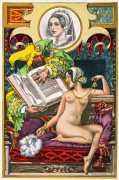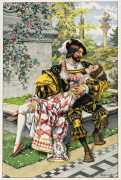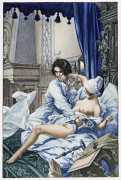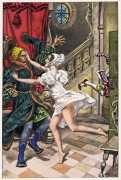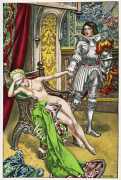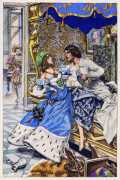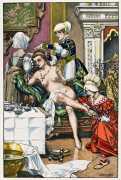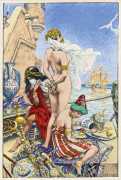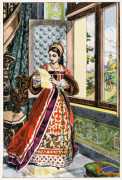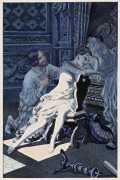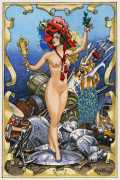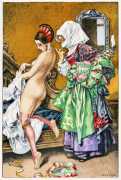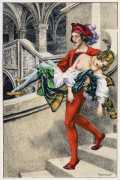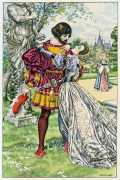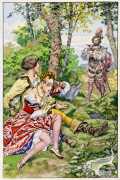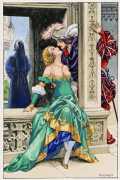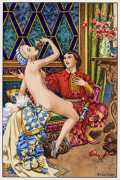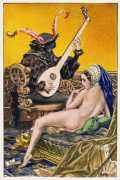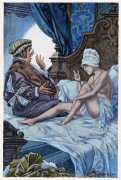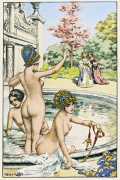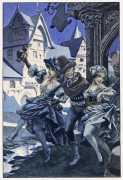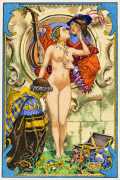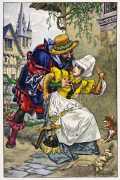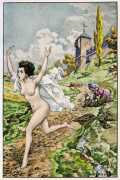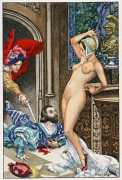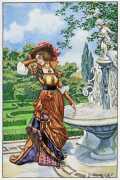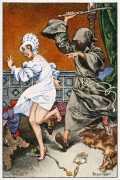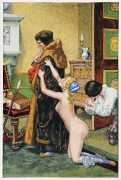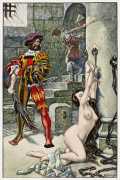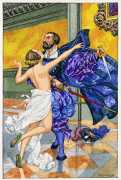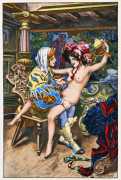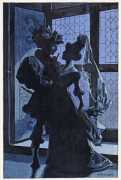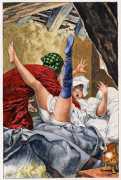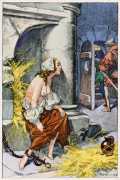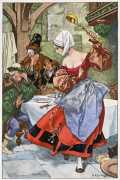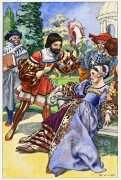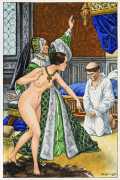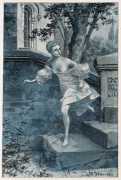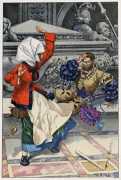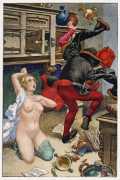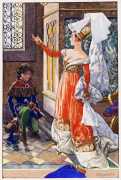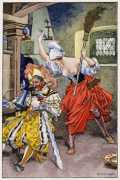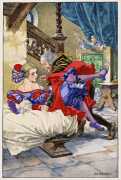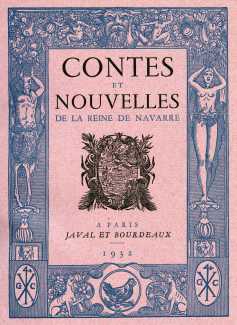 The Contes et nouvelles de la Reine de Navarre (Tales and Short Stories by the Queen of Navarre), more usually referred to as the Heptaméron, is a collection of 72 short stories written in French by Marguerite d’Angoulême, the Queen of Navarre (1492–1549), published posthumously in 1558. It was inspired by The Decameron of Giovanni Boccaccio, and was originally intended to contain one hundred stories covering ten days like The Decameron, but at Marguerite’s death it was completed only as far as the second story of the eighth day. Many of the stories deal with love, lust, infidelity, and other romantic and sexual matters. One was based on the life of Marguerite de La Rocque, a French noblewoman who was punished by being abandoned with her lover on an island off Quebec.
The Contes et nouvelles de la Reine de Navarre (Tales and Short Stories by the Queen of Navarre), more usually referred to as the Heptaméron, is a collection of 72 short stories written in French by Marguerite d’Angoulême, the Queen of Navarre (1492–1549), published posthumously in 1558. It was inspired by The Decameron of Giovanni Boccaccio, and was originally intended to contain one hundred stories covering ten days like The Decameron, but at Marguerite’s death it was completed only as far as the second story of the eighth day. Many of the stories deal with love, lust, infidelity, and other romantic and sexual matters. One was based on the life of Marguerite de La Rocque, a French noblewoman who was punished by being abandoned with her lover on an island off Quebec.
The collection first appeared in print in 1558 under the title Histoires des amans fortunez edited by Pierre Boaistuau, who took considerable liberties with the original version; he used only 67 of the stories, many in abbreviated form, and omitted much of the significant material between the stories. He also transposed stories and ignored their grouping into days as envisaged by the author. A second edition by Claude Gruget appeared only a year later, in which the editor claimed to have ‘restored the order previously confused in the first impression’. The prologues and epilogues to each short story left out by Boaistuau were put back, and the work was given, for the first time, the title Heptaméron, from the Greek ἑπτά (seven) and ἡμέρα (day), referring to the seven-day time frame into which the first seventy short stories are grouped. The best modern French version is by Henri Clouzot, and is used in this edition, while the first complete English translation, by Arthur Machen, appeared in 1886.

The Heptaméron is widely regarded as a major literary work, valued for its lively portrayal of sixteenth century renaissance society, particularly social attitudes about marriage and the relationship between men and women. The narrators, five men and five women – said to be modelled after the author and her court circle – are stranded at a mountain resort following a flash flood, and while they wait for the roads to reopen, they tell each other stories in order to pass the time.
Each day the narrators pick a subject for the stories that they will tell, so the stories are not random but rather explore particular themes, and often act as rebuttals and counterpoints to the stories told by the other narrators. One of the features of the Heptaméron is that the narrators often disagree with one another and engage in lively debates and discussions on the significance of the stories, each interpreting the stories differently based on their personalities and experiences.
The stories told in the Heptaméron are bawdy accounts of infidelity, deceit, lust and greed. On one level they are mere entertainment, on others they are biting critiques of the church, of social hypocrisy, and of the status of women. They are often morally ambiguous, and the heroes and heroines of the stories are frequently morally reprehensible.
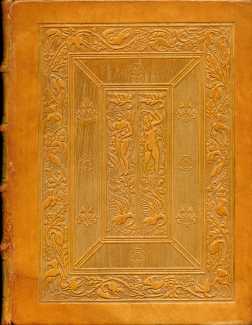 During the 1930s the publishing house of Javal et Bourdeaux was one of Paris’s most prestigious producers of high-quality illustrated editions, and this four-volume Heptaméron was printed on heavy Marais vellum and bound in full tobacco leather with beautiful cold-stamped plates on both covers, featuring naturalistic decoration with birds and branches, and two naked women in the centre panel.
During the 1930s the publishing house of Javal et Bourdeaux was one of Paris’s most prestigious producers of high-quality illustrated editions, and this four-volume Heptaméron was printed on heavy Marais vellum and bound in full tobacco leather with beautiful cold-stamped plates on both covers, featuring naturalistic decoration with birds and branches, and two naked women in the centre panel.
In 1932 Chéri Hérouard was at the height of his career and, as nothing but the best would do, Javal et Bourdeaux commissioned a sequence of 64 full-colour plates from him, which took Hérouard the best part of a year to deliver, assisted on the technical front by the experienced printer and platemaker Daniel Jacomet.
The Hérouard-illustrated Contes et nouvelles de la reine de Navarre was published in a limited numbered edition of 1,540 copies.


